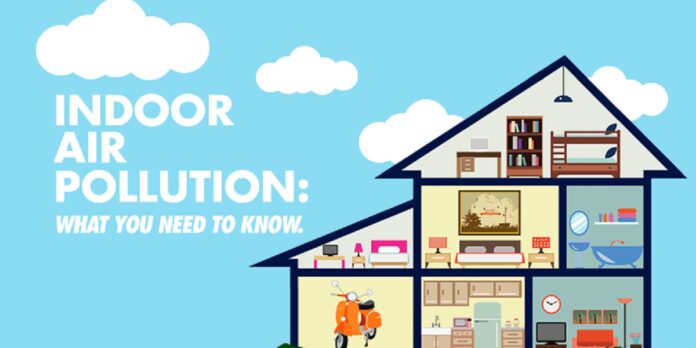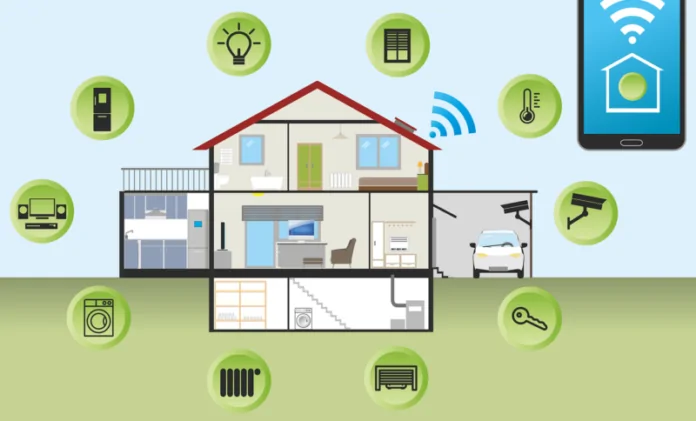We all know outdoor air pollution is bad for us, but we don’t often think about the quality of our indoor air. It has been found low indoor air quality can also have serious health implications such as asthma, heart disease, and even cancer.
Make sure to check the air quality of your home if you or your family are suffering from unexplained respiratory symptoms. You can check out easytesthub.com for more information on how to test the air quality in your home.
The air quality of your home can have health implications for your family.
Take These Steps To Improve Your Indoor Air Quality

Improving your indoor air quality can improve you and your family’s health and quality of life. Follow these steps to get started:
● Learn as much as you can about sources of pollution and avoid adding any pollutants to the air of your household. Among other things, pollutants can include secondhand cigarette smoke or even thirdhand smoke that can be found on clothes and furniture.
● Formaldehyde is a harmful gas that can be emitted by household items. Too much exposure to this can lead to respiratory conditions like bronchitis. You can reduce its effects on the air quality of your household by choosing to use solid wood furniture over composite wood. Also choose used furniture, as it will release lower amounts of formaldehyde with time.
● Try to use safe nontoxic cleaning products, as the chemicals may linger in the air of your home. Be especially careful when using air fresheners, bleach, glass cleaners, and cleaning sprays.
● You’ll need to take steps to control allergens in your house. You’ll find irritants and allergens, such as dust, mold, and pet dander in many indoor spaces. You can control allergens in your living space by washing bedding twice a month to eliminate dust mites, using hypoallergenic pillows and mattresses, and brushing and bathing your pet regularly.
● You can furthermore remove allergens from the air in your home by vacuuming and dusting regularly, washing mold off surfaces like tiles and metal by using bleach or a soap solution. Also, remove and replace carpets, drywall, or wood that have mold growing on it.
● You can use an air purifier to keep the air cleaner in your house. Air purifiers with high-efficiency particulate absorbing (HEPA) filters are usually best for the job. These filters could remove 99 percent of dangerous particles from your air. It can even remove flu virus particles from your air.
● Improve airflow in your home by opening windows and doors to let outside air flow through your home. This is sufficient if the outdoor air is clean with low pollen.

● Make sure that the air coming into your home through vents isn’t contributing to an indoor pollution problem. The filters in your heating and cooling systems, need to be changed regularly.
● Dust can build up in air ducts over time, so make sure the ones in your home are clean. Regularly check the filters of appliances that bring air into your house, and change them as and when needed.
● Dampness and humidity inside your house, which often includes the growth of mold, can also lead to health hazards inside your home. These damp conditions can also cause respiration problems like asthma attacks, coughing, and wheezing. Reduce dampness in your home by using a dehumidifier, opening a window when you shower or cook, finding areas where moisture pools in your house, and clearing them up. It’s also important to have issues fixed that can cause damp environments, such as leaky roofs or pipes or bad ventilation in areas with a lot of steam, like your bathroom or kitchen.
● Heating systems can also have an impact on the air quality in your home. High-risk heating systems are wood-burning stoves or fireplaces that can increase your long-term risk of developing lung cancer. Gas-fueled heating systems are also high risk, as they can release more carbon monoxide that can be dangerous to you and your family. For cleaner air, it’s a good idea to switch to solar and electric heating options.
How Do You Monitor The Quality of The Air In Your Home

You can use an indoor air quality sensor to detect the presence of different types of pollutants.
You can put the sensors throughout your house in different places, but not too near heaters, floor fans, and not in direct sunlight. The safest option is probably to place it on a wall mount.
It might also be a good idea to use a carbon dioxide sensor, as carbon dioxide can cause health issues when there are large amounts present in your home. The drawback of the sensor is that it can’t pick up the dangerous compounds, so it’s best to have a carbon monoxide and radon detector in your house as well.
The air quality sensors don’t all work in the same way. Some take samples of the air every 15 minutes and will send the data to the cloud where you can access it via the relevant software. You’ll get real-time access to the results via a dashboard that will display the data as visual charts that are easy to decipher.
Over time, the monitoring data will give you an accurate picture of your home’s air quality. If you pick up there is a problem, you can then move forward by taking steps to correct the situation.
Final Thoughts
It’s vital to make sure that the air quality in your home is good, as it can affect the health of your family. It would be ideal to monitor the quality of the air, but if you’re not able to do this, make sure you follow some of the other tips in the article to keep the air quality in your home as high as possible. It’s essential, especially for the good health of any allergy sufferers who may live in your household.









